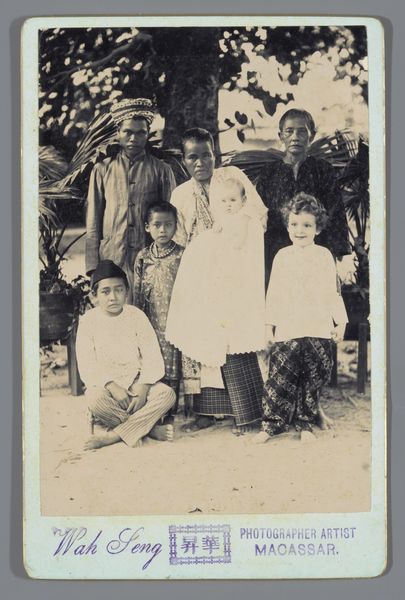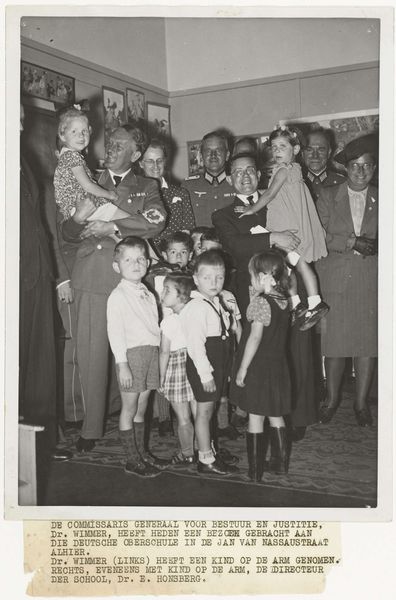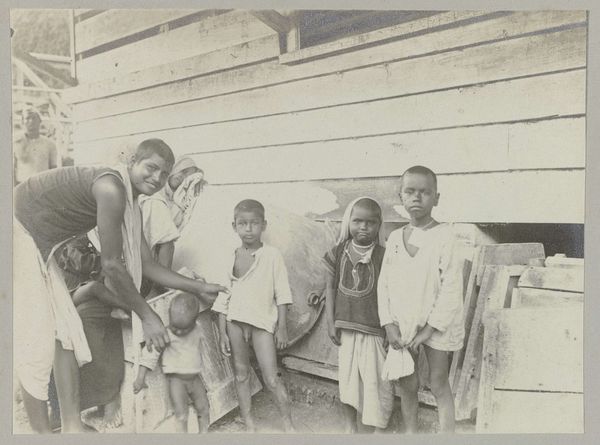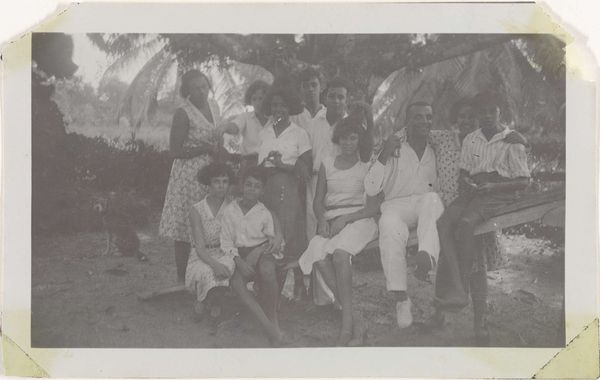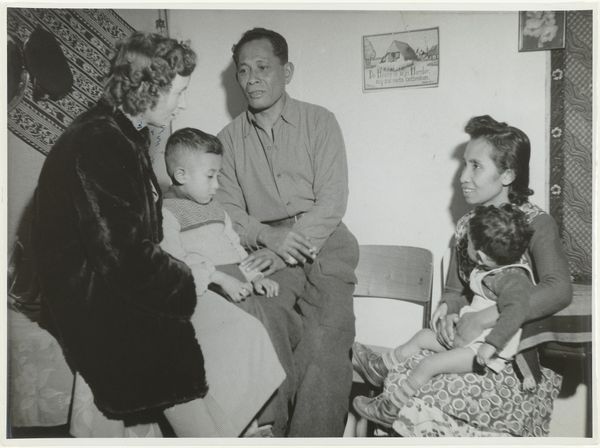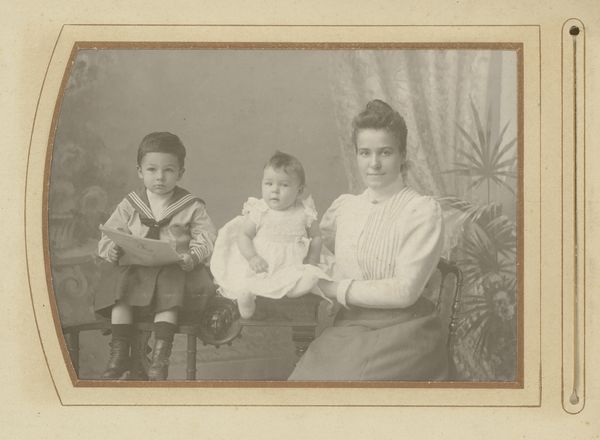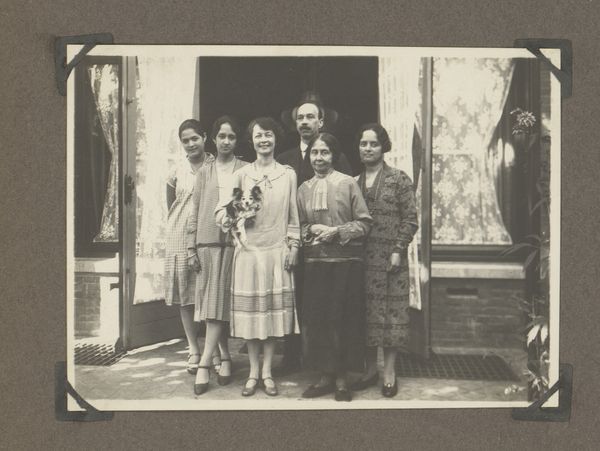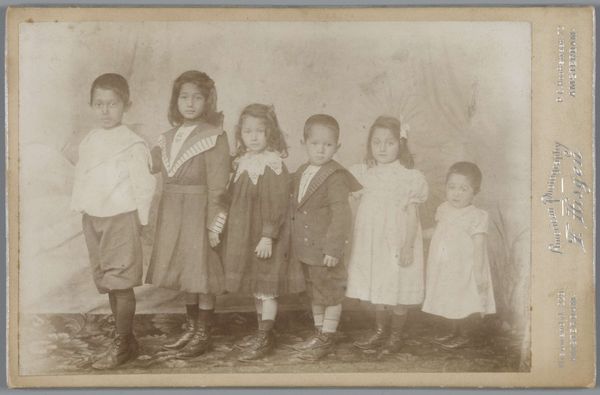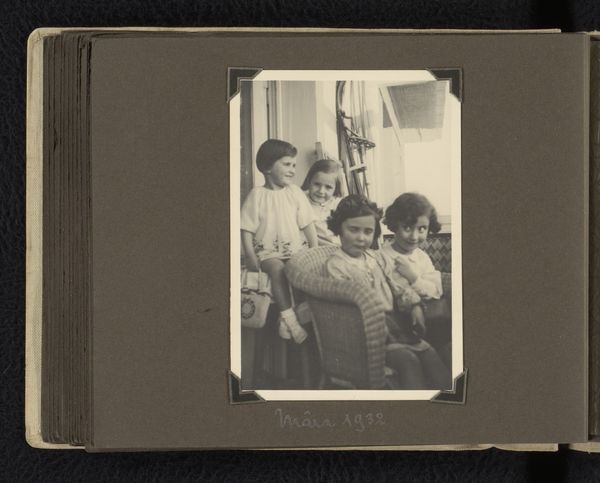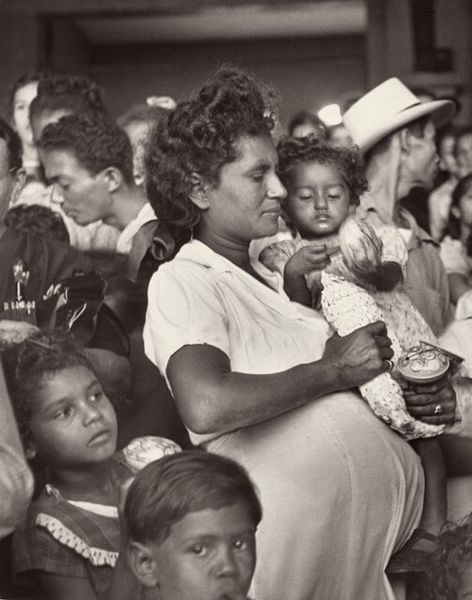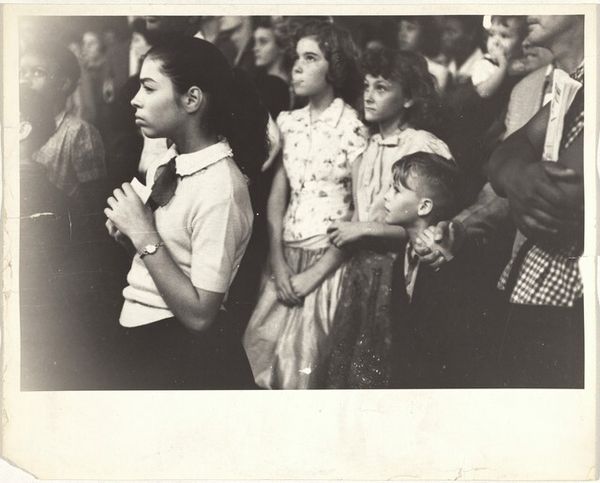
photography, gelatin-silver-print
#
print photography
#
african-art
#
photography
#
historical photography
#
postcolonial-art
#
gelatin-silver-print
Dimensions: height 24 cm, width 18 cm
Copyright: Rijks Museum: Open Domain
Curator: This is "Groep Ambonezen (Molukkers) kort na hun aankomst in Nederland," a gelatin silver print by E. de Vries, taken sometime between 1951 and 1955. Editor: It's striking how stoic everyone appears, a profound sense of apprehension seems etched on their faces. The grayscale only enhances the stark, solemn mood. Curator: De Vries's composition arranges the group almost like a tableau. The subjects are carefully positioned, drawing the eye across the different planes of depth. Consider how the stark contrast amplifies their expressions. Editor: Indeed. Understanding the socio-political context is crucial here. These are Moluccan people, forcibly relocated to the Netherlands after Indonesian independence. This image captures a moment of displacement, loss of homeland, and an uncertain future imposed by colonial power structures. We can see a historical injustice materialized through forced migration. Curator: Absolutely, the texture is quite impressive, and it enhances the subtle lighting, revealing details in their faces. Semiotically speaking, the blanket suggests some form of comfort in this new and unknown environment. Editor: The blanket is also highly symbolic—likely issued by the Dutch government upon their arrival. The children, bundled in unfamiliar Western clothing, embody innocence caught within this political scheme. It's important to highlight that this "welcome" occurred against their wishes. Curator: By controlling the focal point through strategic grayscale application, De Vries directs attention skillfully across various subjects within the photograph. Editor: Precisely, this direction manipulates our emotional response—we become witnesses not only to the collective experience but also to the individual burden borne by each displaced person in that moment of their postcolonial odyssey. Curator: I leave here noticing how the aesthetic execution impacts, overall, such important, somber feelings. Editor: Yes, the photograph serves as a historical artifact. It reminds us of the tangible effects of colonialism and highlights the imperative for reconciliation between nations to bring true restorative justice.
Comments
No comments
Be the first to comment and join the conversation on the ultimate creative platform.

